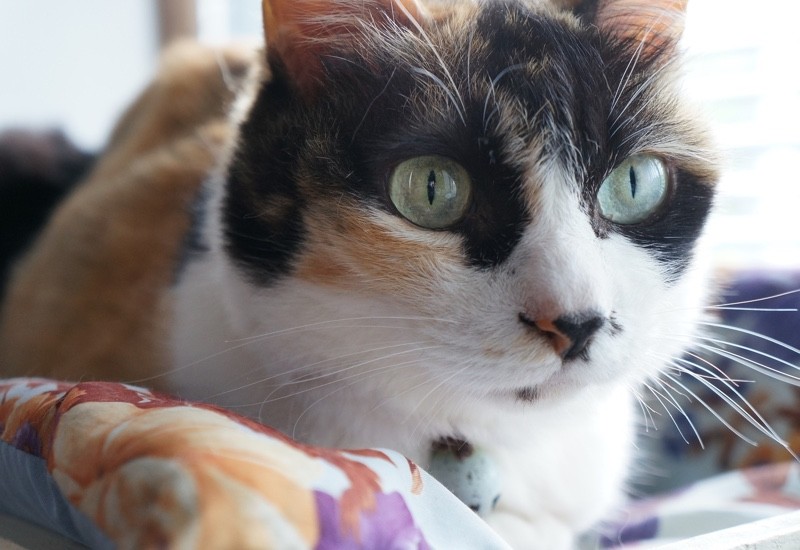Calico cats are instantly recognizable for their striking tri-color coats of white, black, and orange. But did you know that the vast majority of calicos are female? This unique phenomenon is rooted in genetics. Let’s explore the science behind why calicos are almost always female.
 Calico cat with green eyes sits on a cushion
Calico cat with green eyes sits on a cushion
Understanding Calico Cats: It’s Not a Breed
Before diving into the genetics, it’s important to understand that “calico” refers to a coat color pattern, not a breed. Various breeds, including American Shorthairs, Persians, and Japanese Bobtails, can exhibit the calico pattern. The defining characteristic is the presence of three distinct colors: white, black, and orange. Variations like cream, blue-black, reddish, or brown can also appear.
The X Chromosome Connection: The Key to Calico Coloring
The reason why most calicos are female lies within the X chromosome, which carries the gene for coat color in cats. Here’s a simplified explanation:
- Two X Chromosomes are Necessary: The genes for black and orange fur are located on the X chromosome. To display both colors, a cat needs two X chromosomes.
- Female Cats are XX: Female cats naturally possess two X chromosomes, allowing them to inherit both a black and an orange gene, leading to the calico pattern. The white color is controlled by a separate gene that suppresses color, creating the distinct patches.
- Male Cats are XY: Male cats typically have one X and one Y chromosome. This means they can inherit either the black or the orange gene, but not both, preventing them from being calico.
The Rare Male Calico: An Exception to the Rule
While rare, male calicos do exist. This occurs when a male cat has an extra X chromosome, resulting in an XXY configuration known as Klinefelter’s Syndrome. These male calicos are often sterile and may face health challenges associated with the syndrome, such as:
- Developmental Issues: Cognitive and developmental problems can lead to behavioral challenges.
- Bone Weakness: Reduced bone density increases the risk of fractures.
- Metabolic Concerns: Increased body fat can contribute to conditions like diabetes, joint pain, and heart disease.
Caring for a Calico Cat
Caring for a female calico is similar to caring for any other cat. Regular veterinary checkups, vaccinations, and a balanced diet are essential. Grooming is also important to maintain their beautiful coat.
Beyond Genetics: Fun Facts About Calicos
- Symbols of Good Luck: In Japan, calico cats are considered lucky and are often depicted in Maneki-neko figurines, the beckoning cats believed to bring good fortune.
- Official State Cat: Maryland designated the calico cat as its official state cat in 2001, recognizing the similarity of its colors to the state bird, the Baltimore Oriole.
Conclusion: A Genetic Masterpiece
The prevalence of female calicos is a testament to the fascinating interplay of genetics. While male calicos are rare, their existence highlights the complexities of chromosomal inheritance. Whether male or female, calicos are captivating creatures, their unique coat a beautiful expression of their genetic makeup.
